Posted on May 10th, 2010 by ASEE
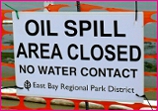 In this lesson, students in grades 3-12 work in teams to analyze an “oil spill” in the classroom, then design, build, and test a system to first contain, and then remove the oil from the water. Students select from everyday items to build their oil containment and clean-up systems, evaluate the effectiveness of their solution and those of other teams, and present their findings to the class.
In this lesson, students in grades 3-12 work in teams to analyze an “oil spill” in the classroom, then design, build, and test a system to first contain, and then remove the oil from the water. Students select from everyday items to build their oil containment and clean-up systems, evaluate the effectiveness of their solution and those of other teams, and present their findings to the class.
Read More
Filed under: Grades 6-8, Grades 9-12, Grades K-5, Lesson Plans | 3 Comments »
Tags: Energy and Environmental Technology, Environmental Engineering, Environmental science, Grades 3-12, Ocean
Posted on May 10th, 2010 by Jaimie Schock
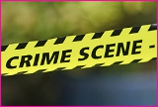 It was Girls’ Night Out with a twist for 60 Pittsburgh-area girls investigating a mock crime scene. The hands-on forensics experience was part of a yearlong program at the California University of Pennsylvania that encourages young woman girls to pursue STEM careers.
It was Girls’ Night Out with a twist for 60 Pittsburgh-area girls investigating a mock crime scene. The hands-on forensics experience was part of a yearlong program at the California University of Pennsylvania that encourages young woman girls to pursue STEM careers.
Read More
Filed under: K-12 Education News | Comments Off on Girls Take Up Crime Scene Detection
Tags: Forensics, Girls Education, Programs for Girls
Posted on May 10th, 2010 by Jaimie Schock
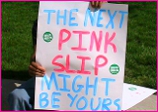 Up to 300,000 K-12 and public university teachers and staff face layoffs in the next academic year. Members of the U.S. Senate Education Committee are hoping to pass a $23 billion measure to keep many of them on the job.
Up to 300,000 K-12 and public university teachers and staff face layoffs in the next academic year. Members of the U.S. Senate Education Committee are hoping to pass a $23 billion measure to keep many of them on the job.
Read More
Filed under: K-12 Education News | 2 Comments »
Tags: Education Policy, Public Policy, Teachers
Posted on May 10th, 2010 by ASEE
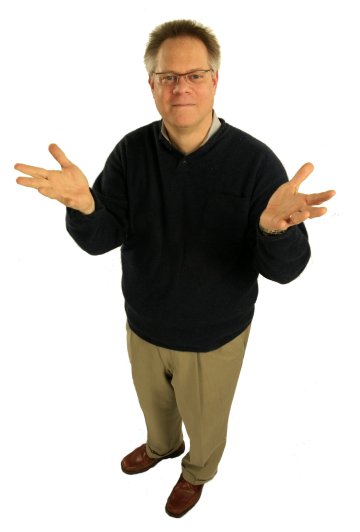 The entertaining audio and video works featured on Engineerguy.com examine the creative role of engineers in designing and creating our world. On the site, Bill Hammack, professor of chemical & biomolecular engineering the University of Illinois and regular commentator for the Illinois Public Radio in Urbana, explores the secrets of his high-tech underwear, the mysteries of mood rings, the perils of nanotechnology, and the threats to privacy from technology. Hammack emphasizes the human dimension to technology – from the trial, tribulations, and triumphs of inventors and scientists to the effect of technology on our daily lives.
The entertaining audio and video works featured on Engineerguy.com examine the creative role of engineers in designing and creating our world. On the site, Bill Hammack, professor of chemical & biomolecular engineering the University of Illinois and regular commentator for the Illinois Public Radio in Urbana, explores the secrets of his high-tech underwear, the mysteries of mood rings, the perils of nanotechnology, and the threats to privacy from technology. Hammack emphasizes the human dimension to technology – from the trial, tribulations, and triumphs of inventors and scientists to the effect of technology on our daily lives.
Read More
Filed under: Web Resources | Comments Off on Website: Engineerguy.com Videos
Tags: Research, Videos, Web Resources
Posted on May 6th, 2010 by ASEE
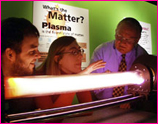 The MIT Traveling Plasma Lab provides a one-hour demonstration of the principles of plasma science. Using a glow discharge plasma, an emission spectrometer, and such ubiquitous substances as nail polish remover, local dirt and a pickle, students discover the unique properties of the plasma state. They role-play as environmental detectives while identifying pollutants in the environment. The lab brings a truck-load of hands-on demonstrations and experiments into schools to show students that science is not an inaccessible topic, but a source of fascination and fun.
The MIT Traveling Plasma Lab provides a one-hour demonstration of the principles of plasma science. Using a glow discharge plasma, an emission spectrometer, and such ubiquitous substances as nail polish remover, local dirt and a pickle, students discover the unique properties of the plasma state. They role-play as environmental detectives while identifying pollutants in the environment. The lab brings a truck-load of hands-on demonstrations and experiments into schools to show students that science is not an inaccessible topic, but a source of fascination and fun.
Read More
Filed under: For Teachers, K-12 Outreach Programs, Web Resources | Comments Off on Resource: Traveling Plasma Lab, MIT, Mass.
Tags: Plasma
Posted on May 6th, 2010 by ASEE
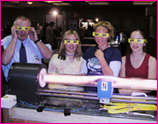
The MIT Plasma Science and Fusion Center (PSFC), dedicated to teaching science through direct experience, has helped create hands-on educational tools, including a plasma demonstration device and an interactive tokamak video game. Through demonstrations and tours of working experiments, MIT students and staff share the excitement of plasma research with area school students.
Read More
Filed under: For Teachers, Grades 6-8, Grades 9-12, K-12 Outreach Programs | Comments Off on Resource: Plasma Lab Outreach, MIT, Mass.
Tags: Fusion, Physics, Plasma
Posted on May 3rd, 2010 by ASEE
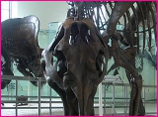 Facing tight budgets and other pressures, schools are taking fewer museum field trips. So museums are taking their shows on the road, via travel programs, videoconferencing, and computer-based lessons. Yet, some worry that kids will lose out, missing “the wow factor of actually seeing that huge Triceratops skeleton.”
Facing tight budgets and other pressures, schools are taking fewer museum field trips. So museums are taking their shows on the road, via travel programs, videoconferencing, and computer-based lessons. Yet, some worry that kids will lose out, missing “the wow factor of actually seeing that huge Triceratops skeleton.”
Read More
Filed under: K-12 Education News | Comments Off on Museum Roadshows Aid School Budgets
Tags: Education Policy, Museum, Museums
Posted on May 3rd, 2010 by asee admin
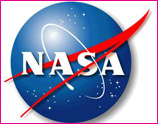 High school students throughout the United States are invited to participate in NASA’s 2010-2011 Interdisciplinary National Science Program Incorporating Research Experience, or INSPIRE, a multitier year-round program designed for students in grades 9 to 12th who are interested in science, technology, engineering, and mathematics (STEM) education and careers. Applications are being accepted through June 30, 2010.
High school students throughout the United States are invited to participate in NASA’s 2010-2011 Interdisciplinary National Science Program Incorporating Research Experience, or INSPIRE, a multitier year-round program designed for students in grades 9 to 12th who are interested in science, technology, engineering, and mathematics (STEM) education and careers. Applications are being accepted through June 30, 2010.
Read More
Filed under: Grades 9-12, K-12 Outreach Programs | Comments Off on Student Programs: INSPIRE at NASA. Deadline: June 30, 2010
Tags: Grades 9-12, NASA, Programs for Students
Posted on May 3rd, 2010 by ASEE
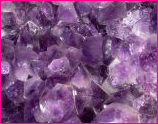 This activity from the Pacific Northwest National Laboratory involves students, grades 6-12, in the formation of crystals on glass slides. In conducting their experiment, students learn about basic principles that guide the work of materials engineers and scientists.
This activity from the Pacific Northwest National Laboratory involves students, grades 6-12, in the formation of crystals on glass slides. In conducting their experiment, students learn about basic principles that guide the work of materials engineers and scientists.
Read More
Filed under: Class Activities, Grades 6-8, Grades 9-12 | 1 Comment »
Tags: Chemical Engineering, Crystal study, Materials Engineering
 In this lesson, students in grades 3-12 work in teams to analyze an “oil spill” in the classroom, then design, build, and test a system to first contain, and then remove the oil from the water. Students select from everyday items to build their oil containment and clean-up systems, evaluate the effectiveness of their solution and those of other teams, and present their findings to the class.
In this lesson, students in grades 3-12 work in teams to analyze an “oil spill” in the classroom, then design, build, and test a system to first contain, and then remove the oil from the water. Students select from everyday items to build their oil containment and clean-up systems, evaluate the effectiveness of their solution and those of other teams, and present their findings to the class.








 It was Girls’ Night Out with a twist for 60 Pittsburgh-area girls investigating a mock crime scene. The hands-on forensics experience was part of a yearlong program at the California University of Pennsylvania that encourages young woman girls to pursue STEM careers.
It was Girls’ Night Out with a twist for 60 Pittsburgh-area girls investigating a mock crime scene. The hands-on forensics experience was part of a yearlong program at the California University of Pennsylvania that encourages young woman girls to pursue STEM careers. Up to 300,000 K-12 and public university teachers and staff face layoffs in the next academic year. Members of the U.S. Senate Education Committee are hoping to pass a $23 billion measure to keep many of them on the job.
Up to 300,000 K-12 and public university teachers and staff face layoffs in the next academic year. Members of the U.S. Senate Education Committee are hoping to pass a $23 billion measure to keep many of them on the job.
 The MIT Traveling Plasma Lab provides a one-hour demonstration of the principles of plasma science. Using a glow discharge plasma, an emission spectrometer, and such ubiquitous substances as nail polish remover, local dirt and a pickle, students discover the unique properties of the plasma state. They role-play as environmental detectives while identifying pollutants in the environment. The lab brings a truck-load of hands-on demonstrations and experiments into schools to show students that science is not an inaccessible topic, but a source of fascination and fun.
The MIT Traveling Plasma Lab provides a one-hour demonstration of the principles of plasma science. Using a glow discharge plasma, an emission spectrometer, and such ubiquitous substances as nail polish remover, local dirt and a pickle, students discover the unique properties of the plasma state. They role-play as environmental detectives while identifying pollutants in the environment. The lab brings a truck-load of hands-on demonstrations and experiments into schools to show students that science is not an inaccessible topic, but a source of fascination and fun.
 Facing tight budgets and other pressures, schools are taking fewer museum field trips. So museums are taking their shows on the road, via travel programs, videoconferencing, and computer-based lessons. Yet, some worry that kids will lose out, missing “the wow factor of actually seeing that huge Triceratops skeleton.”
Facing tight budgets and other pressures, schools are taking fewer museum field trips. So museums are taking their shows on the road, via travel programs, videoconferencing, and computer-based lessons. Yet, some worry that kids will lose out, missing “the wow factor of actually seeing that huge Triceratops skeleton.” High school students throughout the United States are invited to participate in NASA’s 2010-2011 Interdisciplinary National Science Program Incorporating Research Experience, or INSPIRE, a multitier year-round program designed for students in grades 9 to 12th who are interested in science, technology, engineering, and mathematics (STEM) education and careers. Applications are being accepted through June 30, 2010.
High school students throughout the United States are invited to participate in NASA’s 2010-2011 Interdisciplinary National Science Program Incorporating Research Experience, or INSPIRE, a multitier year-round program designed for students in grades 9 to 12th who are interested in science, technology, engineering, and mathematics (STEM) education and careers. Applications are being accepted through June 30, 2010. This activity from the Pacific Northwest National Laboratory involves students, grades 6-12, in the formation of crystals on glass slides. In conducting their experiment, students learn about basic principles that guide the work of materials engineers and scientists.
This activity from the Pacific Northwest National Laboratory involves students, grades 6-12, in the formation of crystals on glass slides. In conducting their experiment, students learn about basic principles that guide the work of materials engineers and scientists.